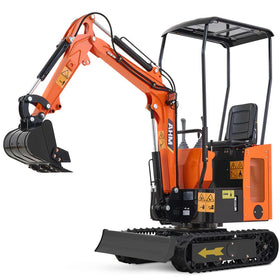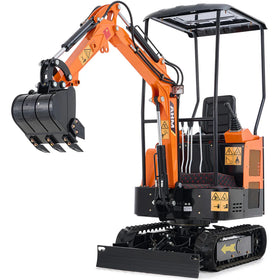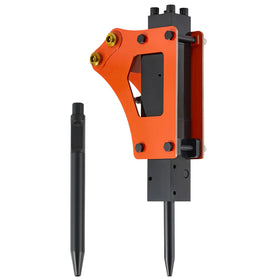What is Trenching?
Trenching refers to excavating a long, narrow hole in the ground using a trencher or excavator. The trench has a greater depth than width, unlike a simple hole. Trenches are commonly used when installing underground utilities, cables, pipes, or drainage systems.
Compared to excavation which can create cavities of any shape and size, a trench has defined proportions - its width does not exceed 15 feet and its depth exceeds its width. Trenches are essential components of civil engineering and construction projects.

Types of Trenches
There are several common types of trenches, categorized by their shape:
- Straight Trench: With vertical sides at 90 degree angles to the base
- Sloped Trench: Angled sides prevent cave-ins; used for large pipes
- Benched Trench: Stepped sides cut horizontally into the walls
- Bell-Bottom Trench: Top is narrower than the bottom, forming a bell shape; used for foundations
The soil type, conduit size, nearby buildings, and trench location determine the ideal shape for the project.
Staying Safe While Trenching
Like any construction job using heavy equipment, trenching can be hazardous or even fatal without proper precautions. Potential trenching hazards include:
- Cave-ins
- Falling debris, equipment, or materials
- Exposure to hazardous fumes
- Accidents involving earthmoving equipment
- Slip and fall accidents
- Electrocution
Cave-ins are especially hazardous and the leading cause of deaths. Follow OSHA excavation guidelines below to protect trenching workers. These apply to all excavation work, not just trench projects.

Use Protective Systems to Prevent Collapses
Require protective systems in trenches over 5 feet deep to avoid cave-ins. Options include:
- Sloped Trench Walls: Angled walls to create sloped sides
- Benched Walls: Horizontal steps cut into trench walls
- Shoring: Supports like timber, jacks, or steel
- Trench Shields: Boxes to prevent collapse
Choose systems based on soil, water level, depth, and surrounding structures. Select robust protections to safely guard workers.
Identify Underground Utilities First
Starting to trench without checking for buried utilities is very dangerous. Workers risk hitting gas, water, or electrical lines causing injuries and leaks.
By law, contact local utilities to mark all nearby lines before starting work - just call 811. This prevents utility line strikes.
Daily Hazard Inspections
Proper safety means checking trenches daily for cave-ins and other hazards before and during work. Remove workers if unsafe conditions appear until protections are in place.
Allow Safe Access and Exit
For trenches over 4 feet deep, install safe access/exit points like ladders or ramps within 25 feet of workers.
Buy or Rent Trenching Equipment?
For frequent trenching jobs, investing in your own trencher can be cost-effective if you can afford the maintenance and repairs. However, owning heavy machinery has additional expenses like upkeep and fixes. At AHM, those concerns can be laid to rest - our mini excavators come with a 1-year full machine warranty and a 2-year engine warranty, plus free lifetime remote technical support for any repair issues. We're always here to help solve any maintenance challenges.
For occasional trenching needs, renting equipment is typically more budget-friendly. You only pay for the time you need, avoiding major investment in an under-utilized asset. The best way to determine the right trencher for your particular project is to consult a professional who can assess your specific requirements.
Frequently Asked Questions (FAQ)
At what trench depth are protective measures required?
Typically, when the trench depth exceeds 1.2 meters (about 4 feet), laws and safety standards require protective systems such as shoring, sloping, or trench boxes to be installed.
What are the main dangers of trench collapse?
The most common hazard is the collapse of trench walls, which can cause suffocation, crushing, or burial of workers. Other risks include accumulation of hazardous gases, equipment collisions, and damage to underground utilities.
How do you choose protective measures based on soil type?
Different soils (e.g., sandy soil, clay) have varying load-bearing capacities and stability. Loose soils require stronger shoring systems or gentler slope angles. Evaluating soil stability is key in making decisions.
How does groundwater affect trench safety?
Groundwater can weaken trench walls and increase the risk of collapse. Drainage measures and real-time water level monitoring should be implemented during construction.
How to respond to a trench collapse emergency?
An emergency response plan should be in place on site, along with rescue equipment and employee training for quick evacuation and first aid.
Why keep equipment and spoil piles at least 2 feet from the trench edge?
Keeping equipment and spoil away from the edge reduces pressure on trench walls and lowers collapse risk.
How to ensure underground utilities are not damaged during trenching?
Before excavation, contact relevant authorities to locate and mark underground utilities to avoid accidental strikes and damage.







